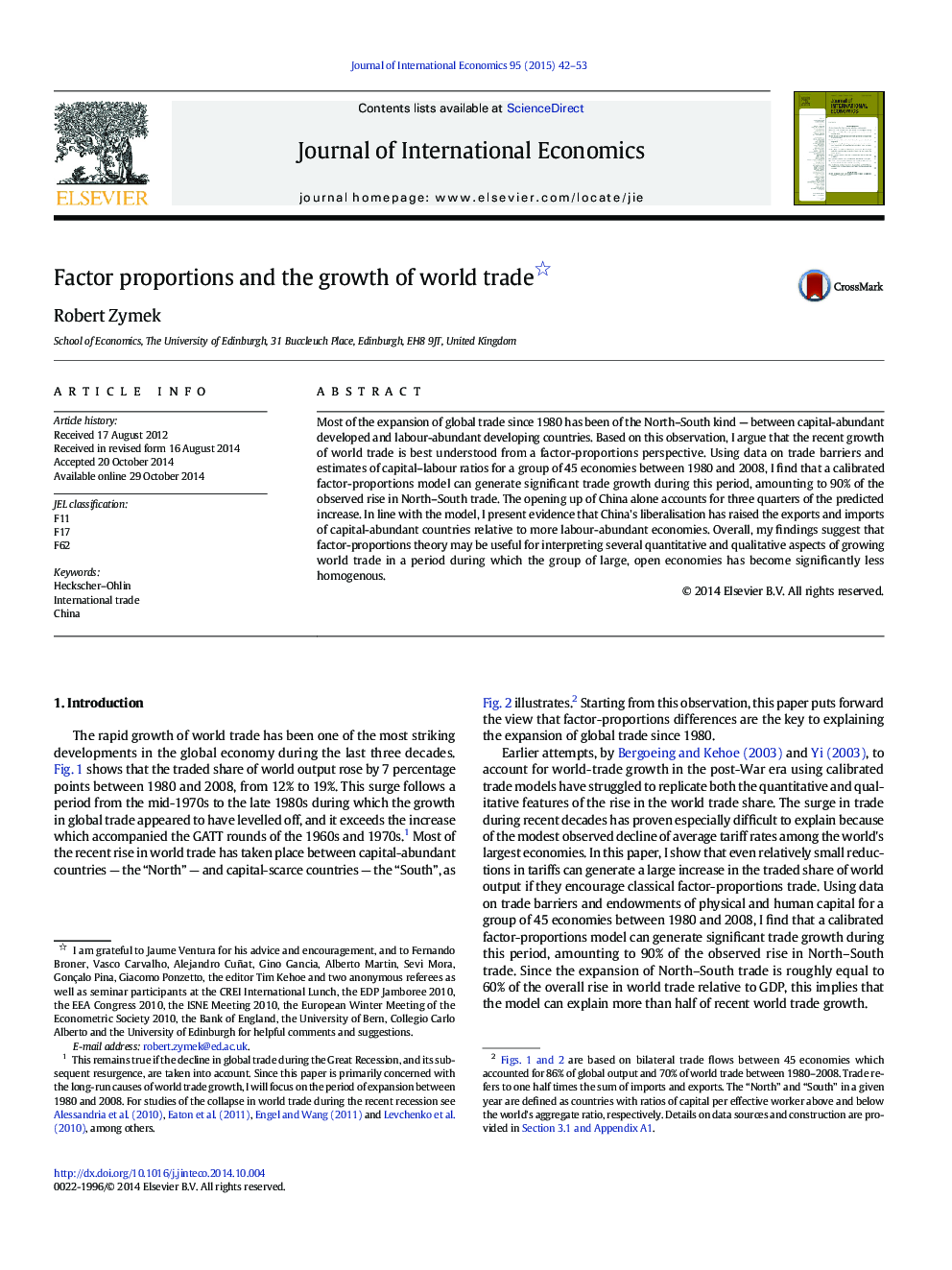| Article ID | Journal | Published Year | Pages | File Type |
|---|---|---|---|---|
| 963025 | Journal of International Economics | 2015 | 12 Pages |
Abstract
Most of the expansion of global trade since 1980 has been of the North-South kind - between capital-abundant developed and labour-abundant developing countries. Based on this observation, I argue that the recent growth of world trade is best understood from a factor-proportions perspective. Using data on trade barriers and estimates of capital-labour ratios for a group of 45 economies between 1980 and 2008, I find that a calibrated factor-proportions model can generate significant trade growth during this period, amounting to 90% of the observed rise in North-South trade. The opening up of China alone accounts for three quarters of the predicted increase. In line with the model, I present evidence that China's liberalisation has raised the exports and imports of capital-abundant countries relative to more labour-abundant economies. Overall, my findings suggest that factor-proportions theory may be useful for interpreting several quantitative and qualitative aspects of growing world trade in a period during which the group of large, open economies has become significantly less homogenous.
Related Topics
Social Sciences and Humanities
Economics, Econometrics and Finance
Economics and Econometrics
Authors
Robert Zymek,
